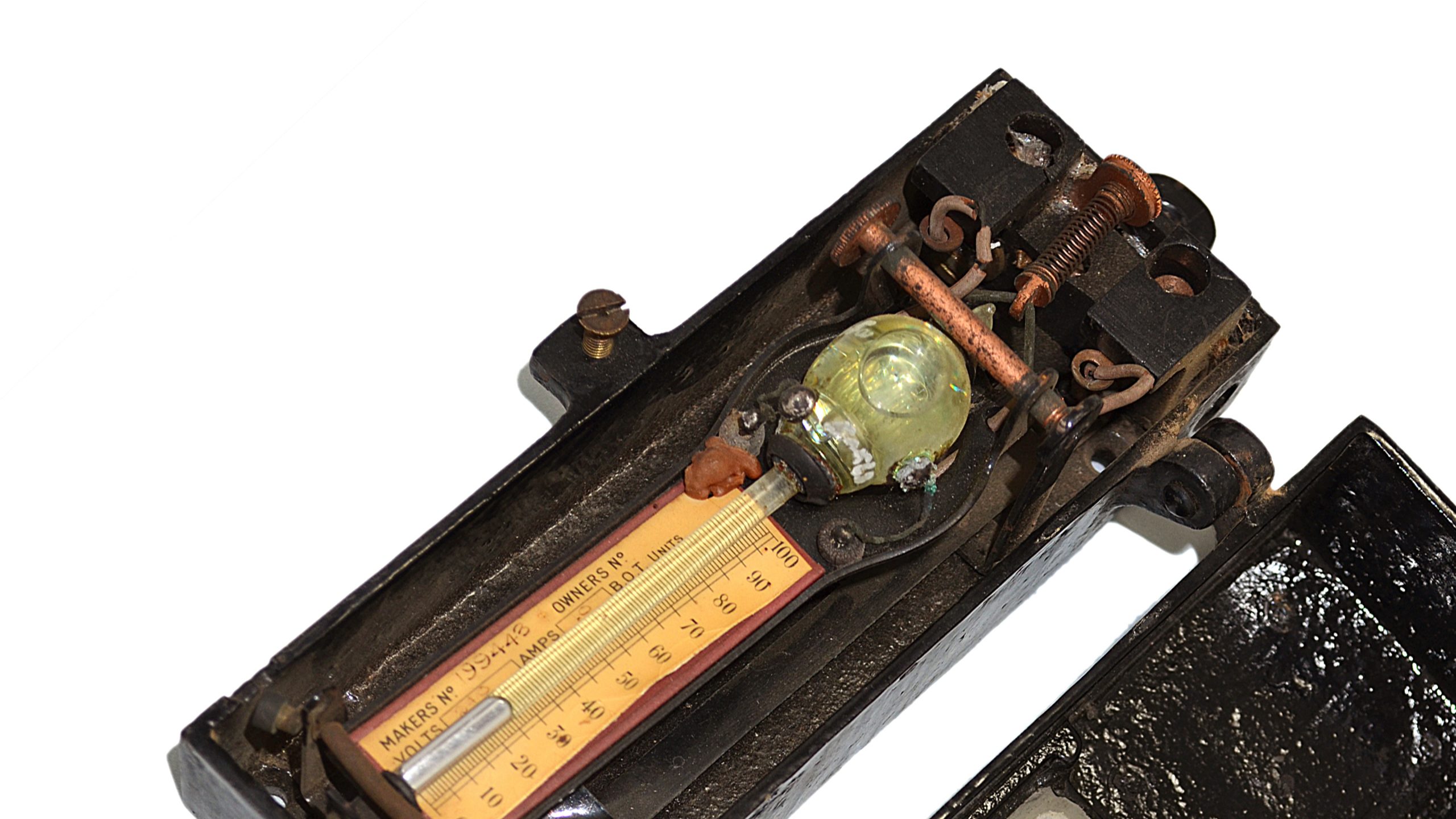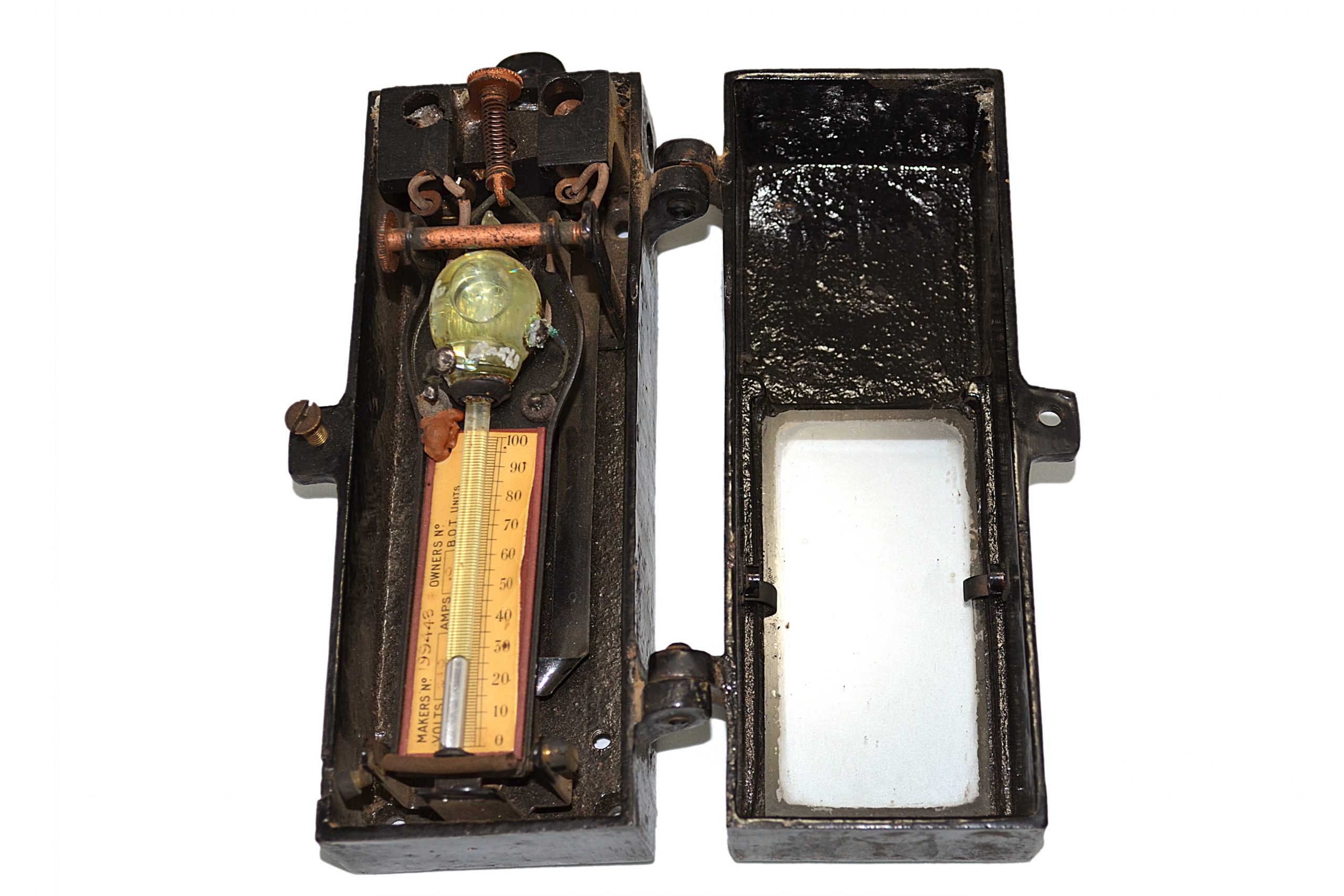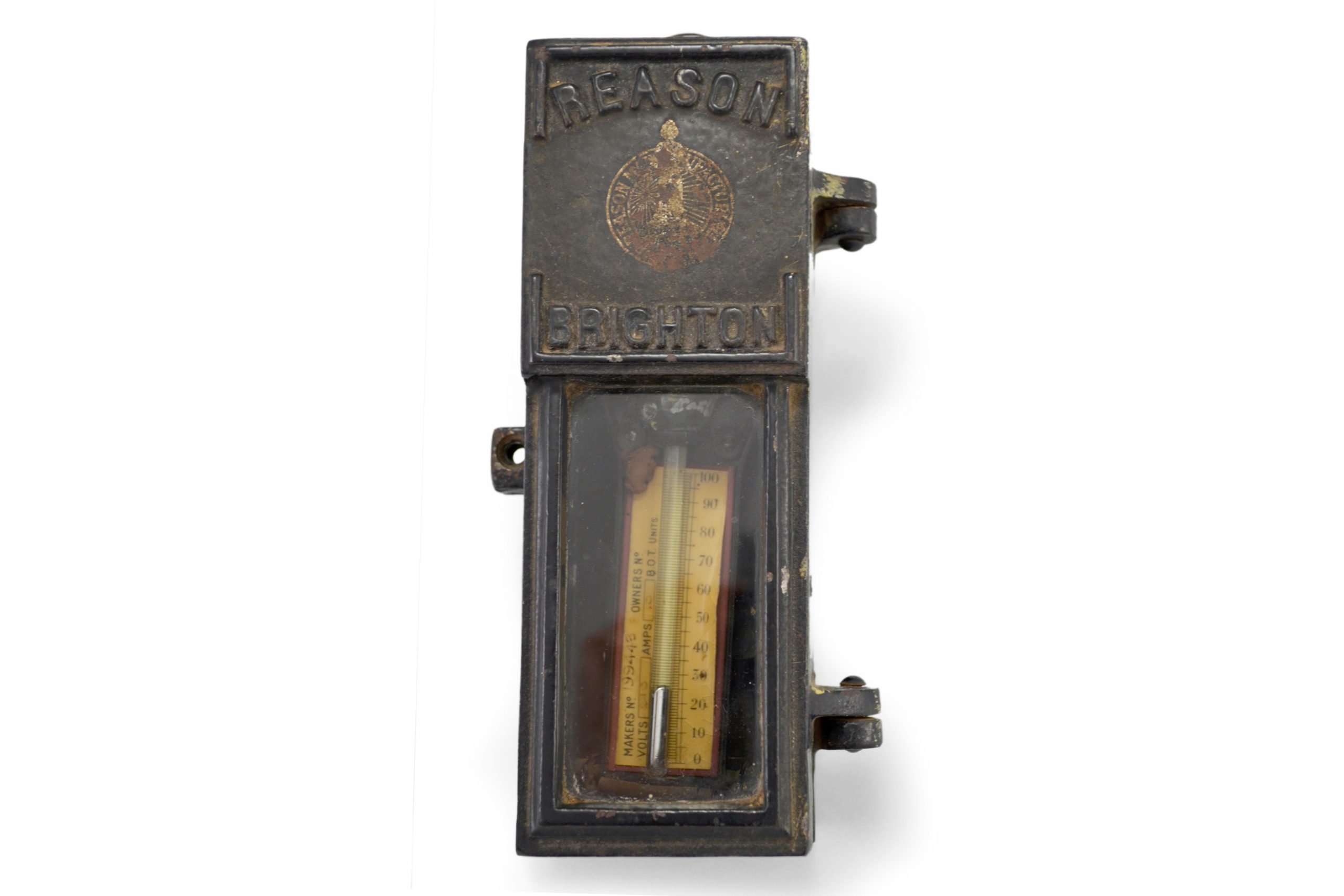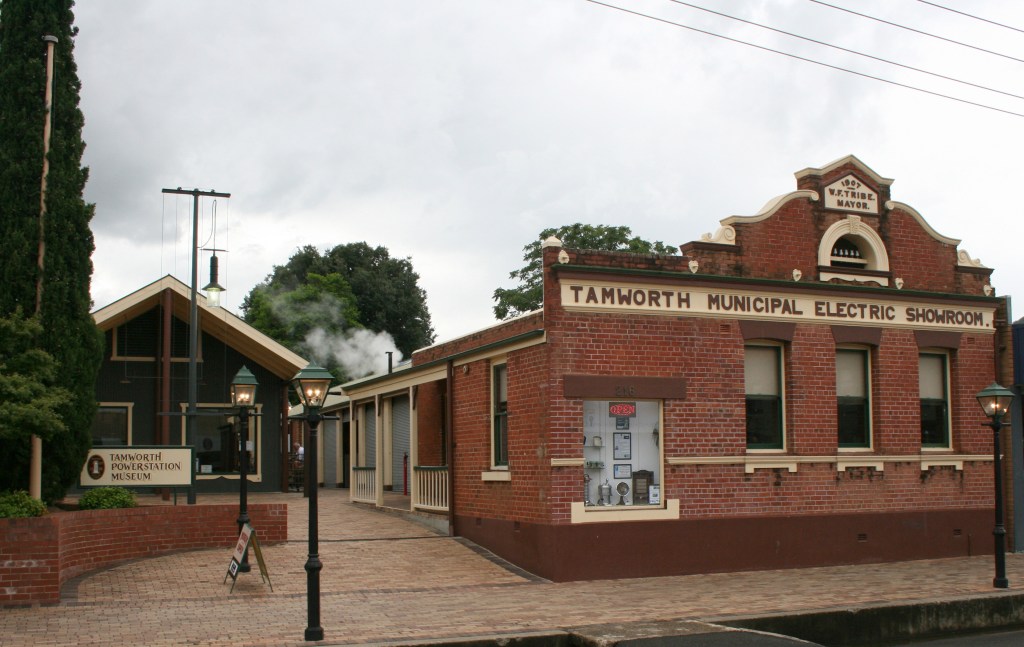Power Within Reason
The 'Reason' Electricity Meter
Nowadays we have smart meters that monitor and, in some cases, remotely measure and control our power use. In the 1890s, as the availability of electrical power became more common, two of the most successful electrical power meters measuring power usage were the Edison and the Aron electricity meters.
The Edison meter had two copper plates sitting in a chemical solution. The electrical current passing through the solution removed copper from one plate and deposited it on the other. At the end of the month, the plates were weighed with the weight change recording how much power was used. Though highly accurate, the system was complicated and awkward.
The Aron meter used two clocks and a magnet. As electricity passed through the magnet, it altered the speed of one of the clocks. The difference between the two clocks determined the electricity usage.
This electricity meter is dated from around 1907 and comes from the British company Reason. A very simplified explanation of how it works is that it combines elements of both the Edison and Aron meters.
An electrical current causes a chemical reaction that makes the mercury rise in the tube. The mercury level indicates electricity usage via the gauge that is read easily through the glass window on the front. When the reading is taken, the tube is inverted so the mercury returns to the bottom of the tube once more. After that, all the customer was left to do was pay the bill.






